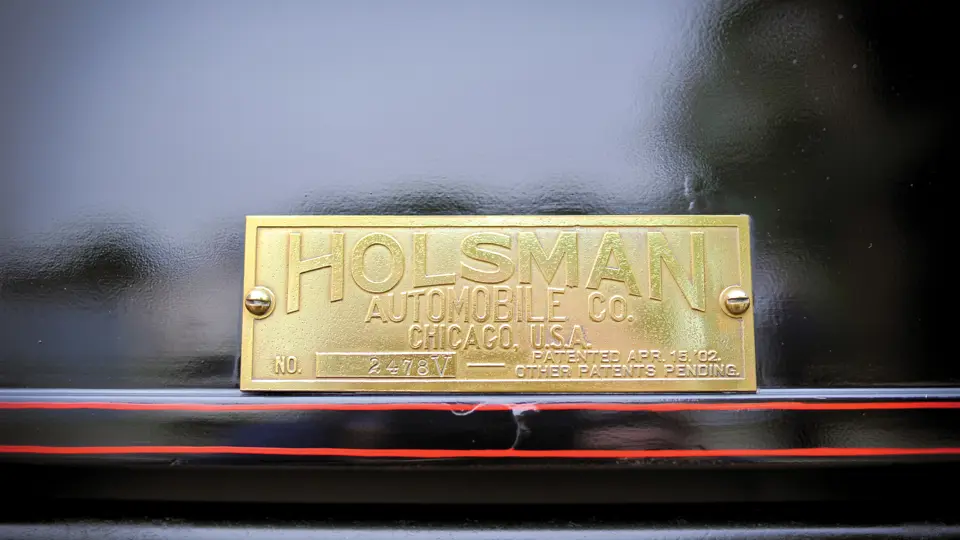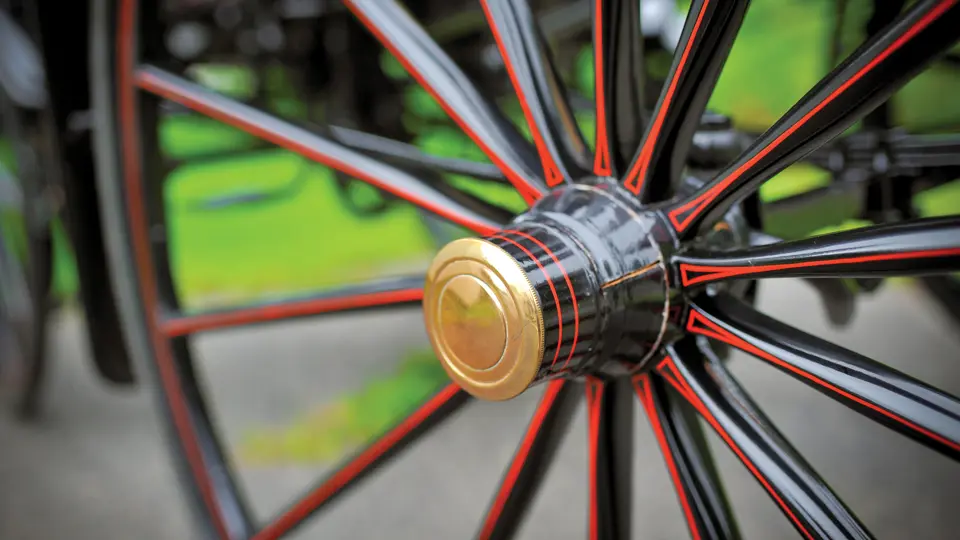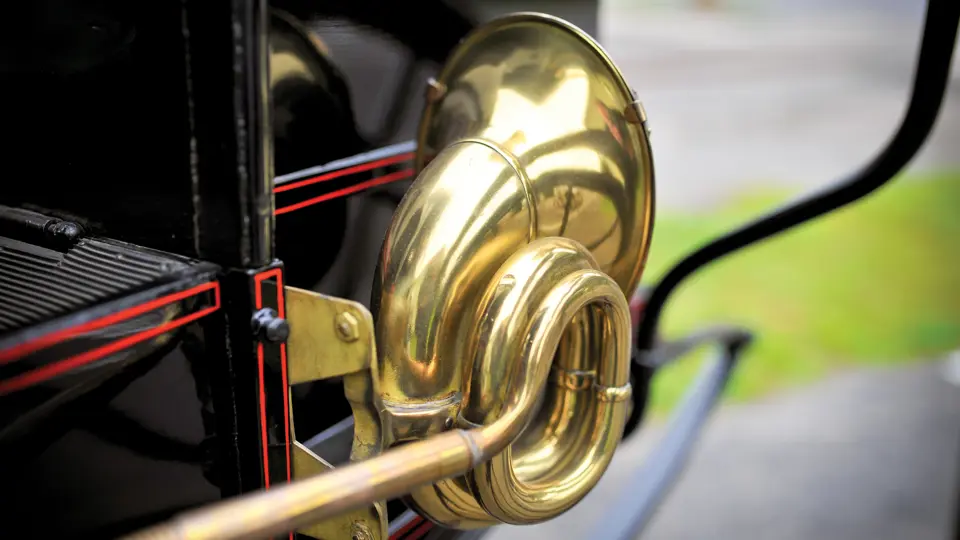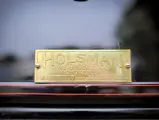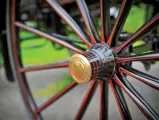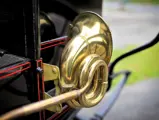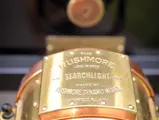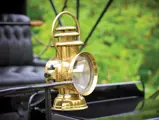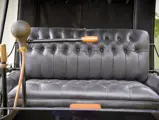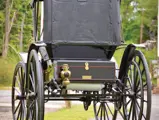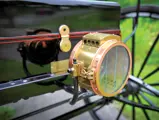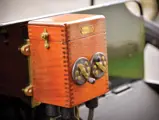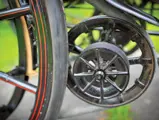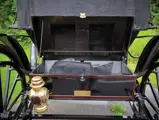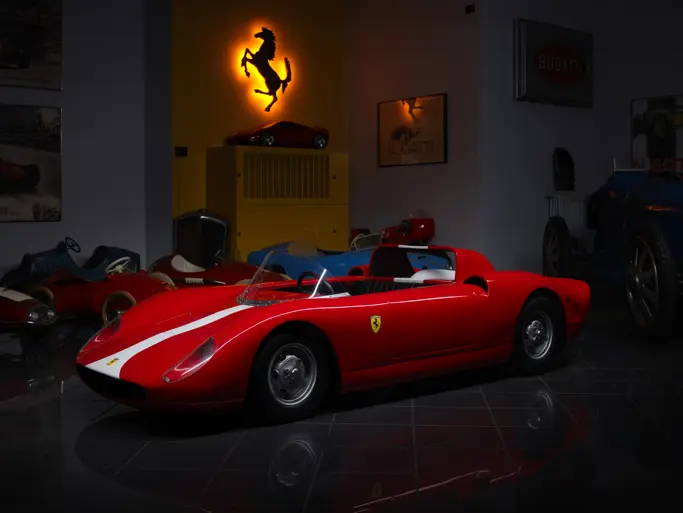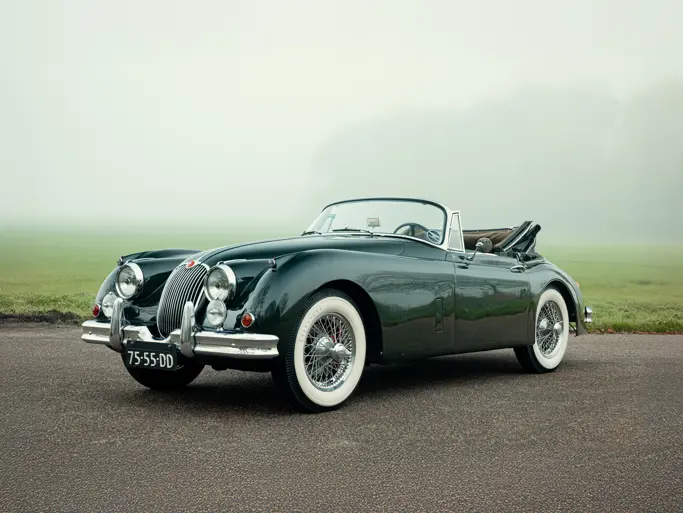12.8 hp, 100.5 cu. in. horizontally opposed air-cooled twin-cylinder engine, two-speed gear transmission with double chain drive to the rear wheels, solid front and rear axles with full-elliptical leaf springs, and two-wheel mechanical brakes. Wheelbase: 75 in.
Henry K. Holsman and his associate, C.H. Bryan, formed the Holsman Automobile Company in Chicago in 1903. Their car was immediately popular. High-wheel automobiles appealed to Midwestern farmers, as they could ride over most types of terrain and move easily through high water. The first Holsmans used 7/8-inch manila rope for drive belts, but this was problematic in wet weather, so eventually a canvas-covered chain was devised.
Unlike other high-wheel manufacturers, Holsman did not evolve into what became conventional car design, with smaller wheels and pneumatic tires. Henry Holsman stuck to high-wheelers exclusively, and his company was in receivership by 1910. He made another attempt at a high-wheeler with the Independent Harvester in nearby Plano, Illinois, in 1911, with even less success.
This handsome high-wheel Holsman was delivered new to a doctor in Penn Yann, New York, in the Finger Lakes region. The consignor is the third owner, having purchased it about 20 years ago from the second owner in Cortland, some 40 miles east of its first home. It was restored shortly after acquisition, and it remains in very good condition today.
The wheels are immense, standing near shoulder high, and the car towers over them. The tires are thin, solid rubber bands, which leave the springs to soak up most of the road shocks. The hand-operated brake shoes rub directly on the tires. The body is painted black, with maroon moldings that match the wheel spokes. The lighting and all brass is comprised of a single center-mounted headlight, two high-mounted carriage lights, and a taillight.
The car has the later drive belts, made of chain with a canvas covering. There is a gear transmission giving two speeds forward, but the vehicle must be stopped to change between them. An electric starter has been unobtrusively installed, but it is easily removable should the new owner prefer to be a purist. Although on museum display for the last few years, the car has recently been recommissioned for reliable operation.
High-wheel automobiles are the true horseless carriages. With few in number now and most having never been seen on the road, they demonstrate what it was like in the very early days of motoring history. This Holsman is an excellent example and will turn heads wherever it goes.
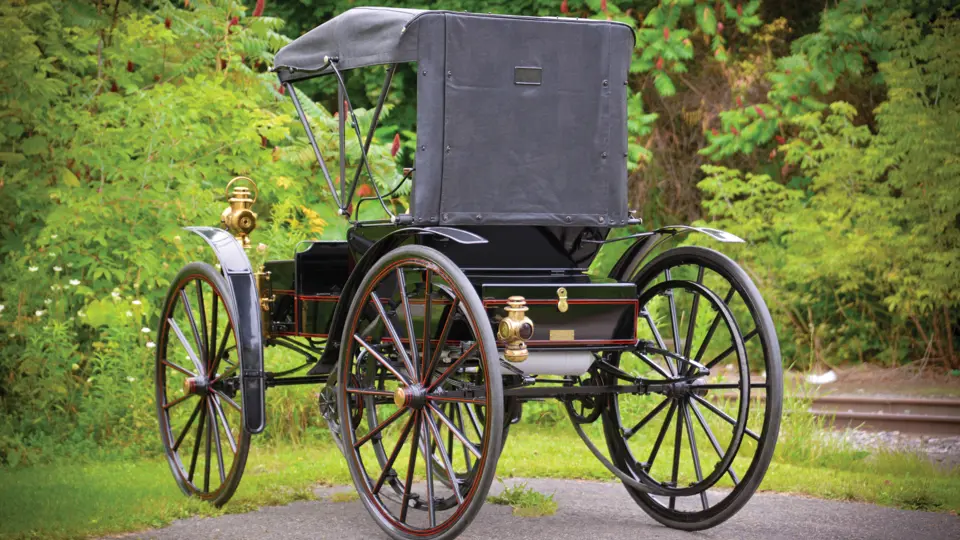
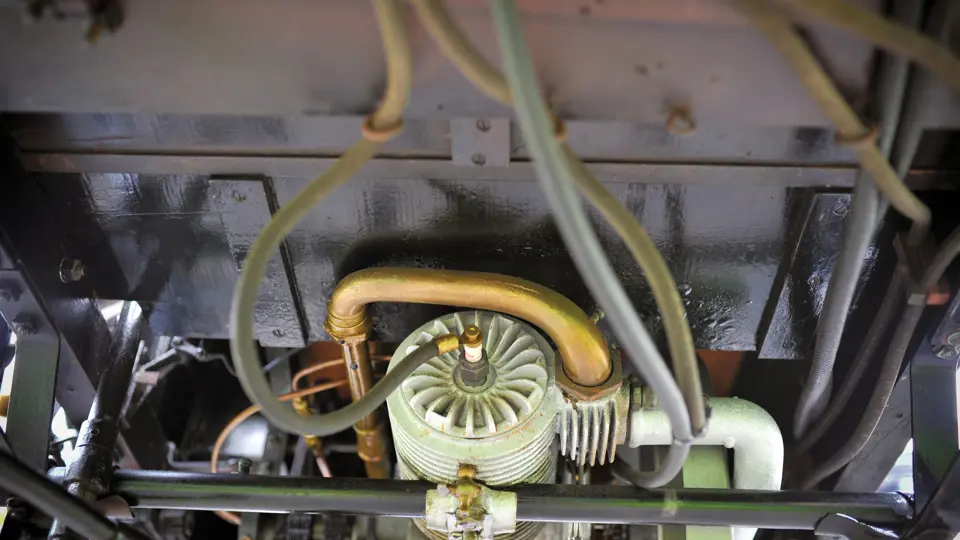




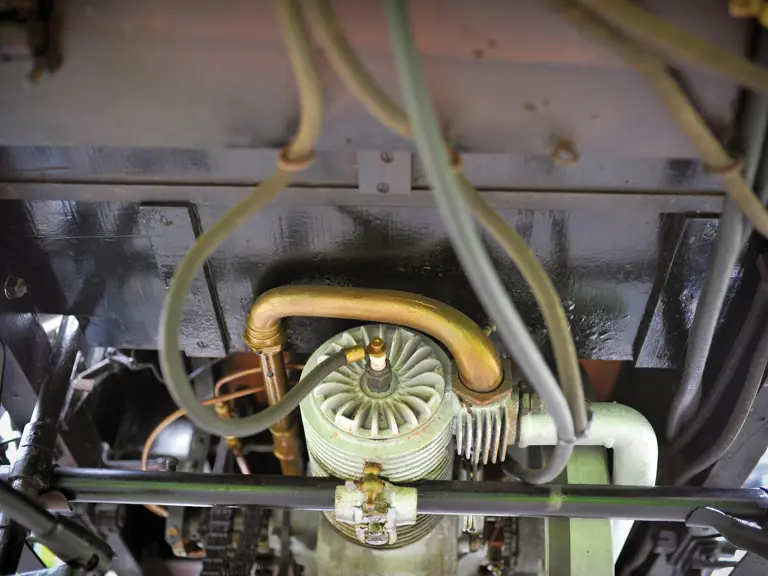

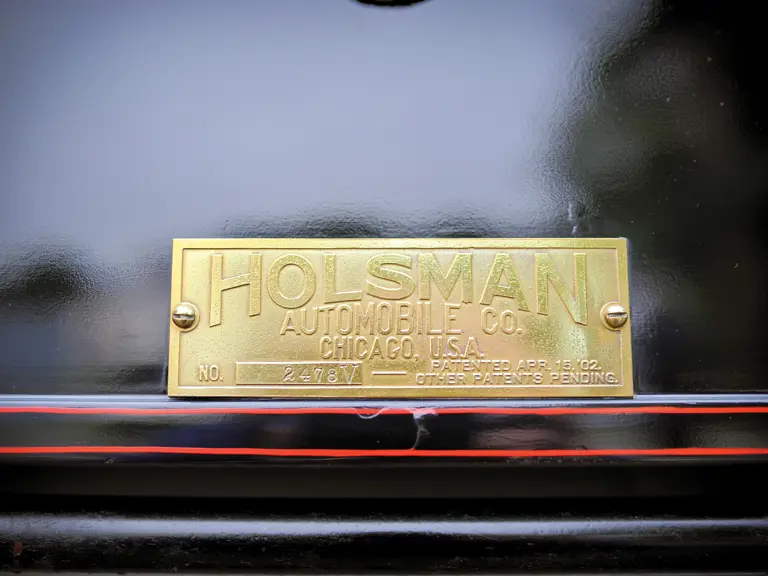
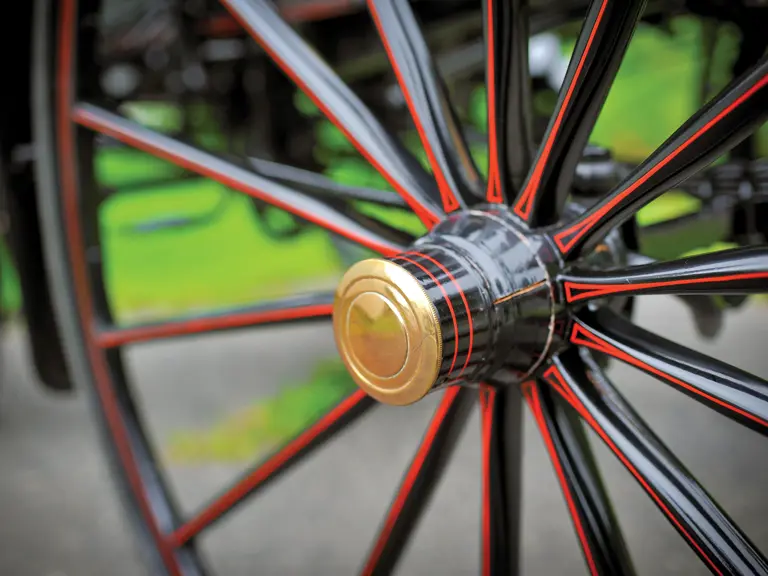
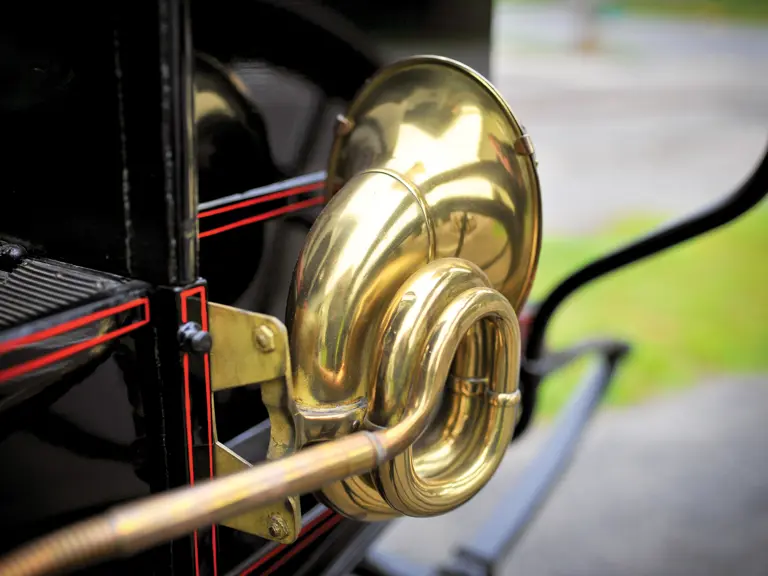
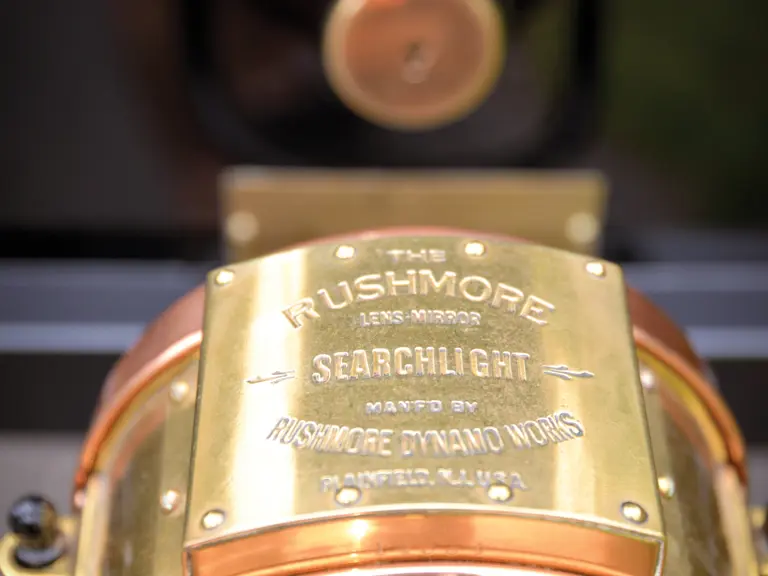

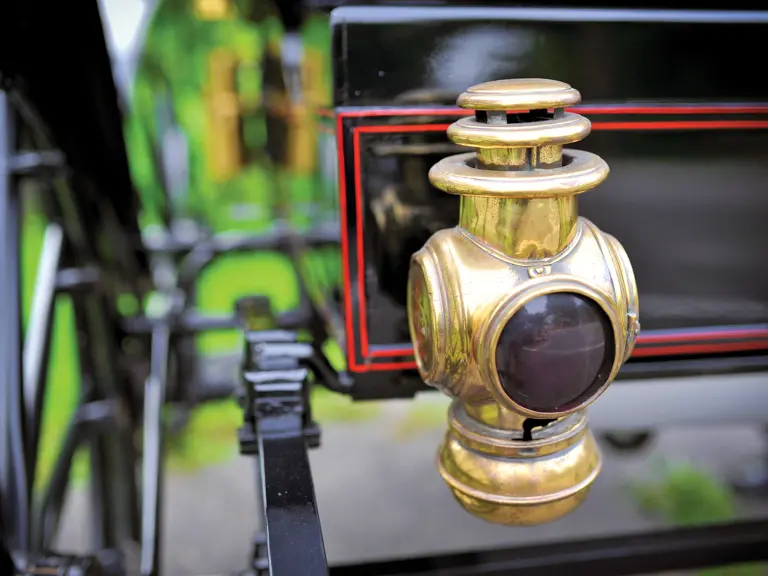
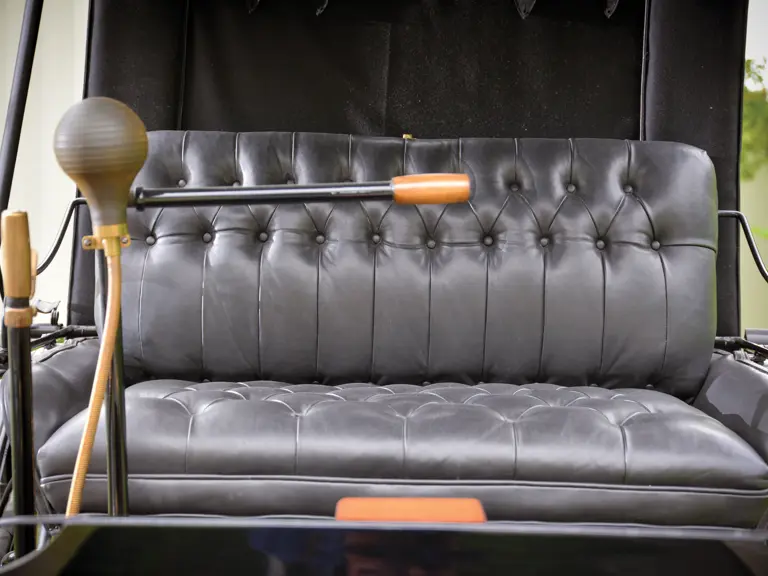
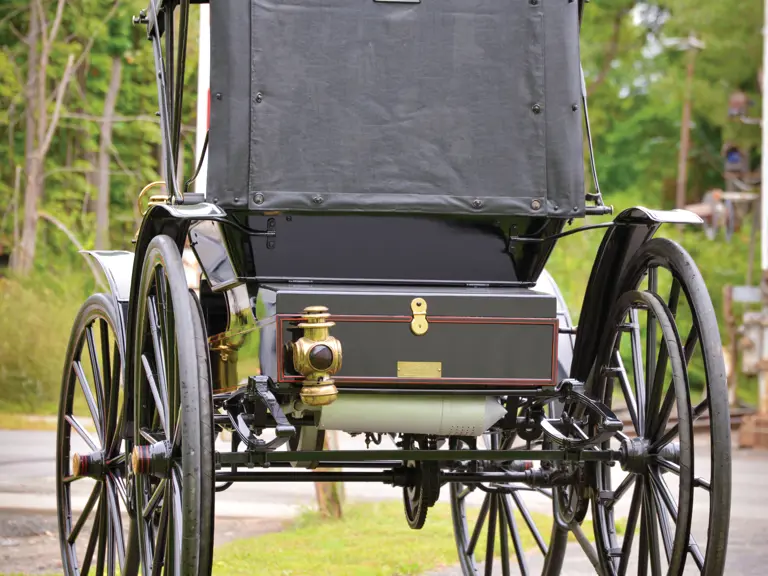
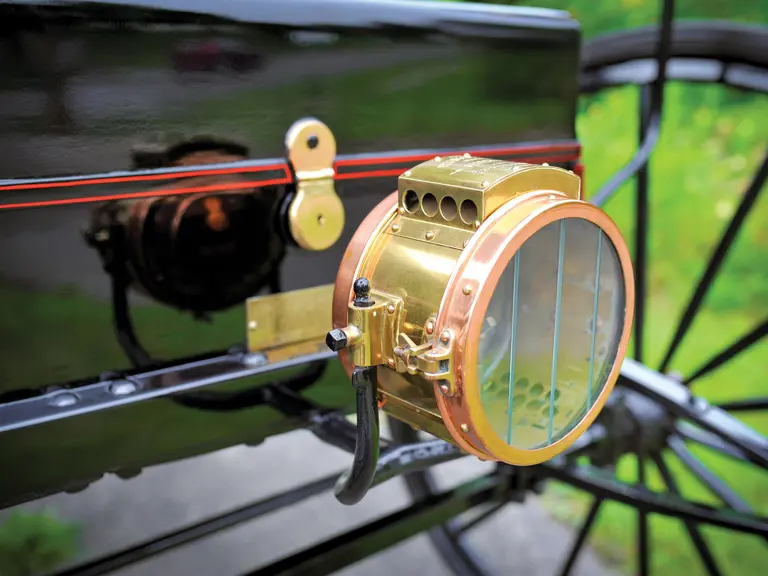
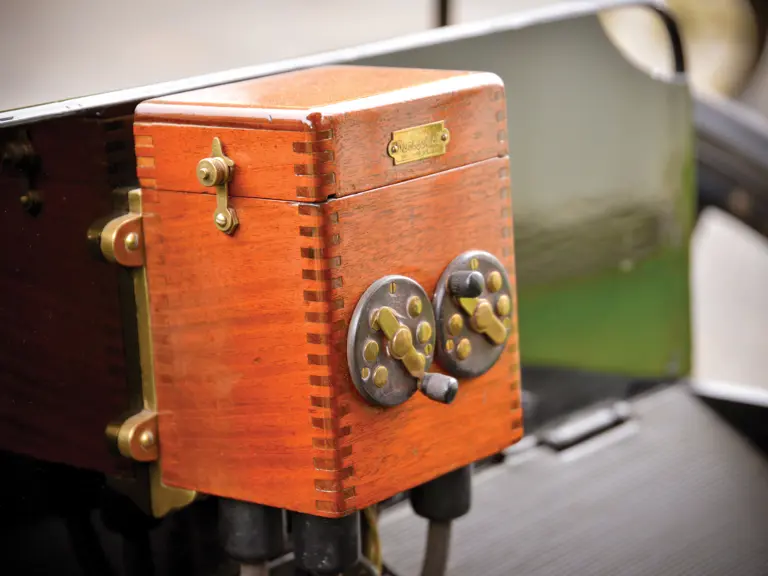
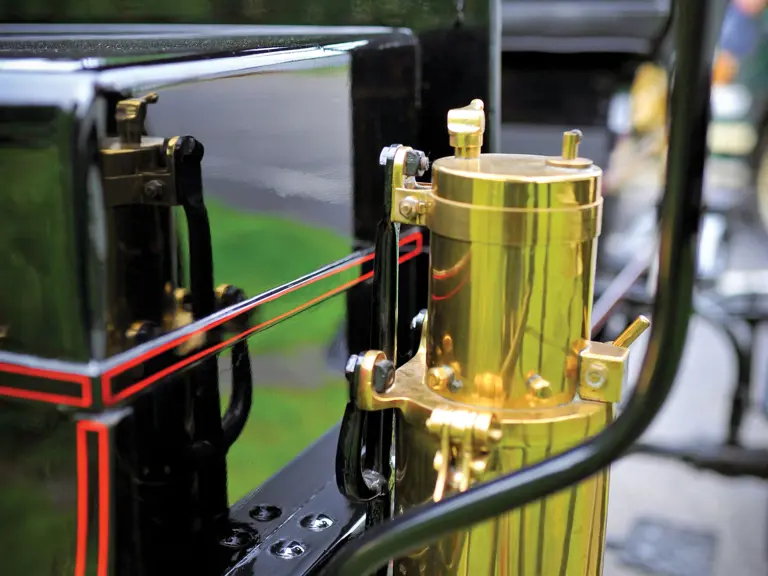
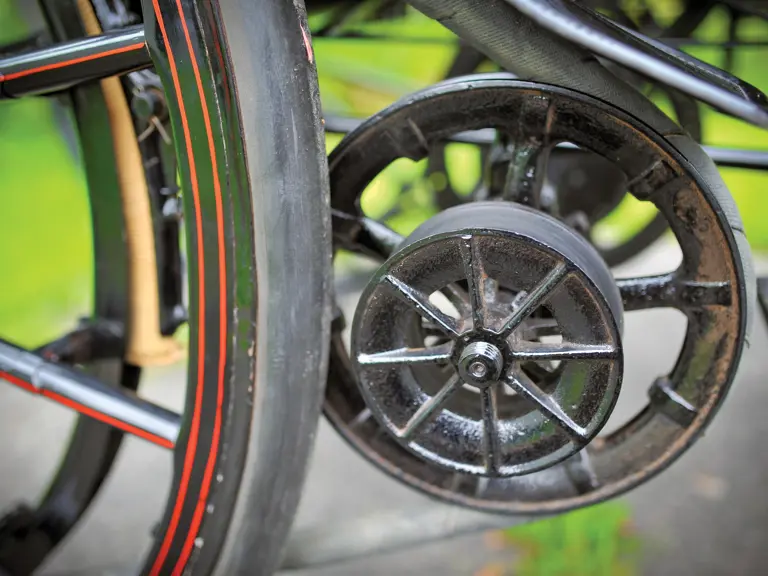
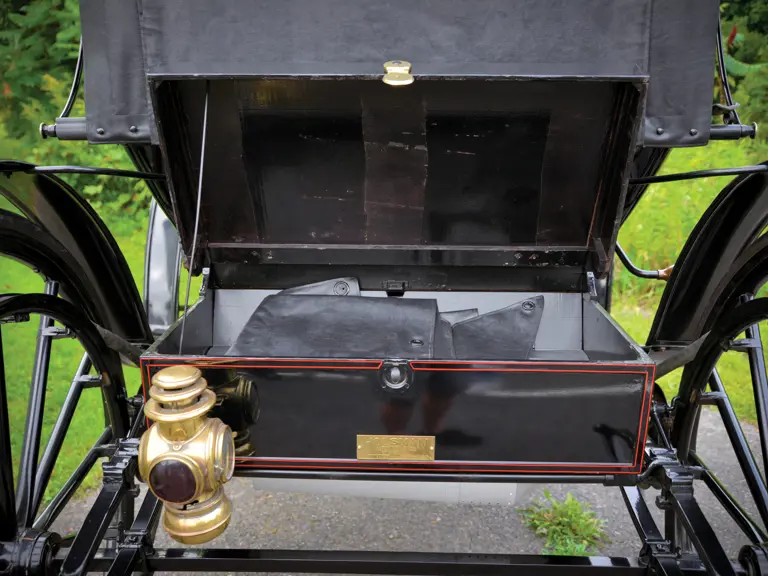
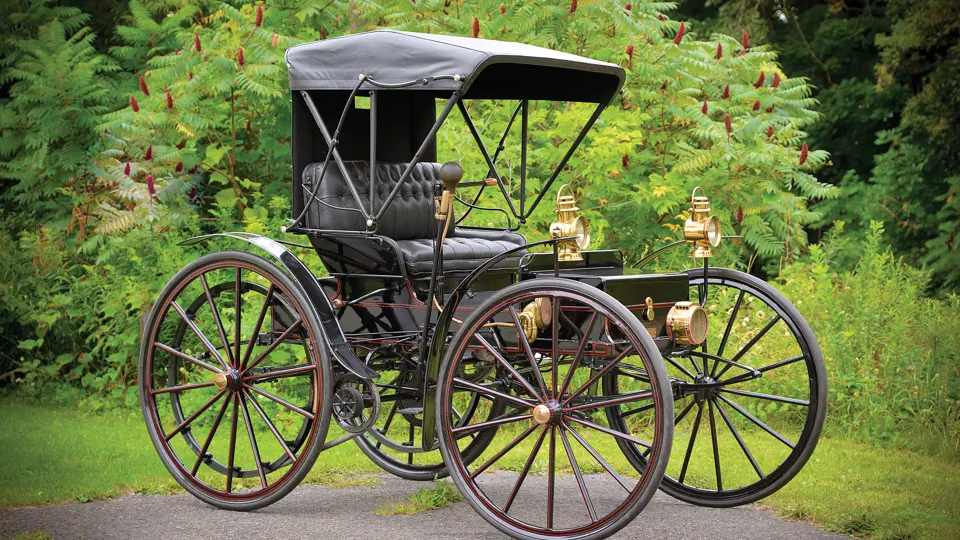
 | Hershey, Pennsylvania
| Hershey, Pennsylvania
